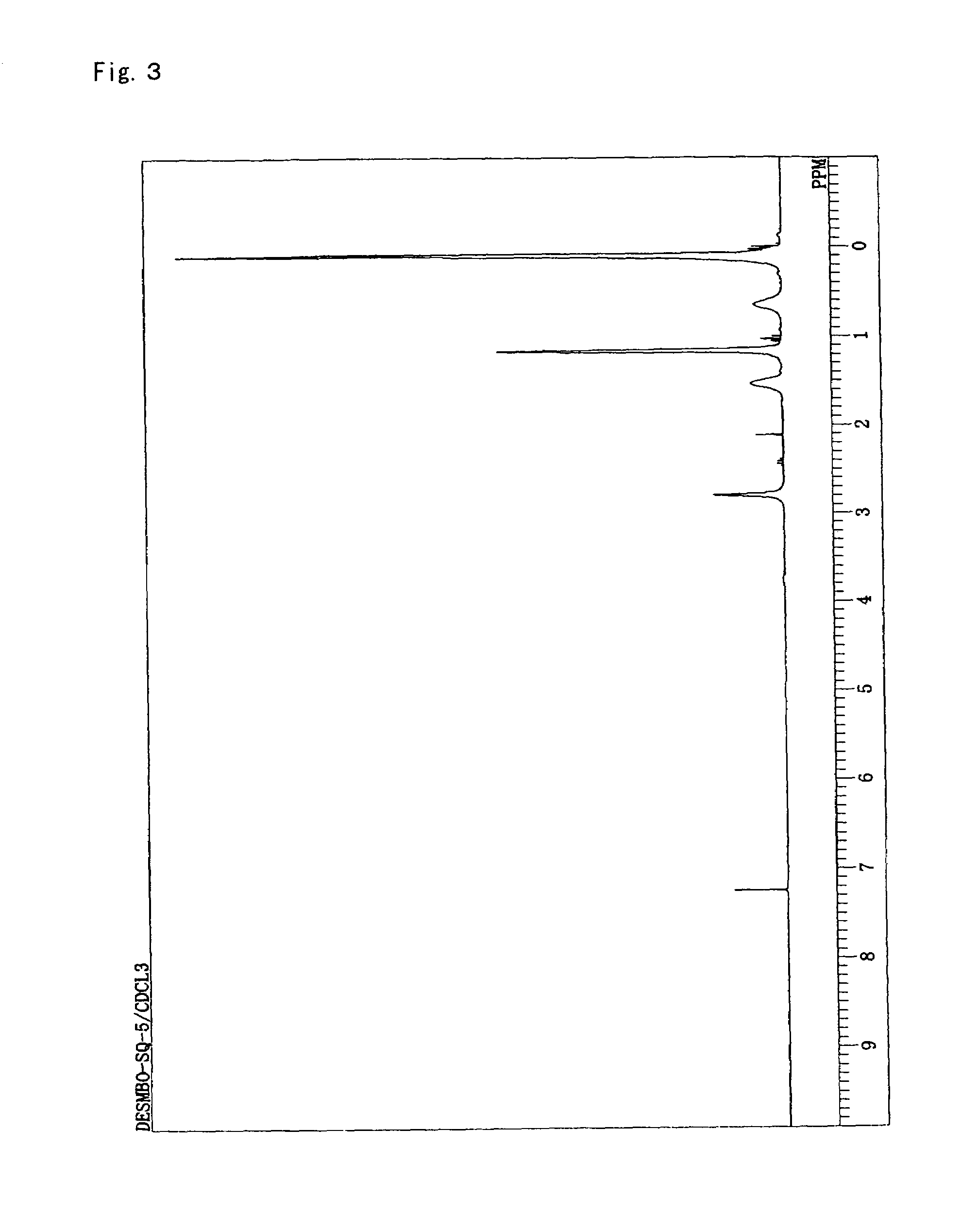Method for producing cyclic organic silicon compound and organic silicon resin having alcoholic hydroxyl group
a technology of organic silicon and organic resin, which is applied in the direction of silicon organic compounds, organic chemistry, chemistry apparatus and processes, etc., can solve the problems of difficult to remove the starting materials and purify the organic silicon resin, difficult to precisely control the introduction amount of alcoholic hydroxyl group, and inapplicable methods for low-cost manufacturing, etc., to achieve suppress secondary reactions, high yield, and high purity
- Summary
- Abstract
- Description
- Claims
- Application Information
AI Technical Summary
Benefits of technology
Problems solved by technology
Method used
Image
Examples
example 1
[0112]1-Butene-3-methyl-3-ol (30 g, 348 mmol) was charged into and stirred in a reaction vessel (flask) provided with a condenser, a dropping funnel and a magnetic stirrer and placed in an oil bath. Triethoxysilane (62.9 g, 383 mmol) was incorporated into the dropping funnel. The triethoxysilane (11.2 mL) in the dropping funnel was added into the flask, and the temperature of the oil bath was set to 80° C. When the internal temperature reached 70° C., a 0.1 m Pt-dvds xylene solution (13 μL, 0.0013 mmol) was placed into the flask, and reaction was initiated. The reaction was continued, and it was confirmed by gas chromatography that the quantity of ethanol produced by the ring-closing reaction had reached the expected quantity based on the starting materials. After the reaction was completed, a colorless a transparent liquid (58.2 g) (boiling point: 117-120° C. at 13,300 Pa, yield: 82%, purity: 98% or higher as confirmed by gas chromatography measurement) was obtained by reduced-pres...
example 2
Synthesis of Organic Silicon Resin
[0119]DESMBO (49 g, 240 mmol), methyltriethoxysilane (78.6 g, 441 mmol), hexamethyldisiloxane (19.5 g, 120 mmol) and acetone (91 g) were charged into and stirred in a reaction vessel provided with a dropping funnel and a magnetic stirrer. Subsequently, 1.5 wt % aqueous solution of hydrochloric acid (37.4 g) was incorporated into the dropping funnel and slowly dripped. After dropping was completed, stirring was conducted for 1.5 hours at room temperature. Diisopropyl ether (200 g) was then added, anhydrous magnesium sulfate was added to dehydrate for two hours. The anhydrous magnesium sulfate was filtered out, and hexamethyldisilazane (38.7 g, 240 mmol) was slowly added while stirring. After two hours of stirring at room temperature, the solvent was evaporated under reduced pressure. After that, methylethylketone (200 g) and a 1N aqueous solution of hydrochloric acid were added to rinse the product, rinsing with water was repeated until the water lay...
example 3
[0127]Propylene glycol methyl ether acetate containing 0.5 wt % of water was prepared as the solvent. The organic silicon resin produced in Example 1 was dissolved to a concentration of 10 wt % in the solvent, and a sample was created. This sample was allowed to stand at 60° C. for three days, and the change in molecular weight was monitored. The results are shown in Table 5.
[0128]
TABLE 5DaysMwMnMw / Mn03,4002,7001.313,3002,6001.323,4002,7001.333,3002,6001.3
[0129]It was confirmed that the organic silicon resin was stable, having no change in molecular weight.
PUM
| Property | Measurement | Unit |
|---|---|---|
| reaction temperature | aaaaa | aaaaa |
| temperature | aaaaa | aaaaa |
| temperature | aaaaa | aaaaa |
Abstract
Description
Claims
Application Information
 Login to View More
Login to View More - R&D
- Intellectual Property
- Life Sciences
- Materials
- Tech Scout
- Unparalleled Data Quality
- Higher Quality Content
- 60% Fewer Hallucinations
Browse by: Latest US Patents, China's latest patents, Technical Efficacy Thesaurus, Application Domain, Technology Topic, Popular Technical Reports.
© 2025 PatSnap. All rights reserved.Legal|Privacy policy|Modern Slavery Act Transparency Statement|Sitemap|About US| Contact US: help@patsnap.com



